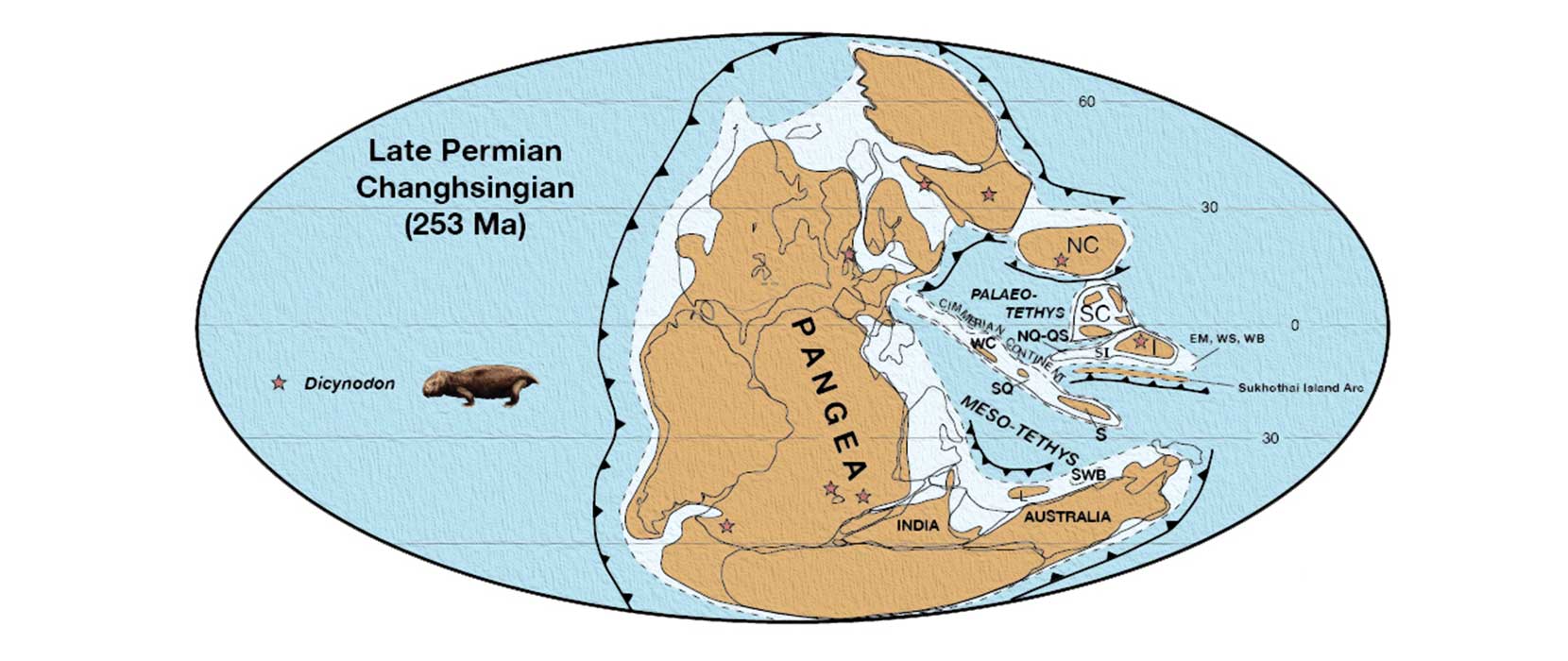SHIFTING CONTINENTS AND LOST OCEANS OF ASIA
Did you know — geologically speaking — that Australia could ‘claim’ most of East and Southeast Asia?
Professor Ian Metcalfe School of Environmental and Rural Science
Professor Ian Metcalfe from UNE’s Palaeoscience Research Centre is a world authority on the geological and tectonic evolution of Asia. ‘East and Southeast Asia are located at the zone of plate tectonic convergence between the Eurasian, Indo-Australian and Philippine/Pacific Plates where catastrophic volcanic eruptions, earthquakes, and tsunamis are still generated today by subduction and collision processes’. Therefore, what we think of as the current rigid Eurasian landmass is in fact a giant ‘jig saw puzzle’ of continental blocks that 400 million years ago attached to the Gondwana supercontinent in the southern hemisphere (effectively, India and Australia). These continental blocks then separated from Gondwana and translated northwards by the opening and closure of three major ocean basins, now long vanished but known to palaeoscientists as the the Palaeo-Tethys, Meso-Tethys and Ceno-Tethys oceans. Collision of the Gondwana-derived continental blocks, followed by the collision of India and now Australia with those blocks, occurred progressively over the last 300 million years to form Asia as we now know it.
Professor Metcalfe has been leading multidisciplinary research teams unravelling the timings of separation, northwards movements and times of collision of these blocks, and the tectonic setting, width, depth and timings of the opening and closure of the Tethyan ocean basins, as well as the nature and ages of related volcanic arcs and orogenic mountain belts.
How does one even begin to conceive of the massive forces involved, and time-scales of many millions of human lifetimes? Professor Metcalfe explains that this requires large teams and a strong multidisciplinary research approach, including specialist studies on stratigraphy, sedimentology, palaeontology, in particular micropalaeontology, palaeobiogeography, palaeoclimatology, structural geology, geophysics, palaeomagnetism, isotope geochronology, geochemistry, as well as plate tectonics. Collaborations from Australia, USA, Britain, Japan, Malaysia, Thailand, Vietnam, Indonesia, and Myanmar have been fostered, and linked into past and ongoing collaboration with Chinese geologists with the Ministry of Geology and Academia Sinica institutions and universities, especially the China University of Geosciences. Scholars at all levels (Research Masters, PhD, postdoctoral, and professorial) make up the teams involved, who are supported by the International Geoscience Programme: a joint endeavour of UNESCO and the International Union of Geological Sciences. Extensive fieldwork in East and Southeast Asia, including in some very remote regions, is providing the sample material for those multidisciplinary analyses of samples and data. Through this extensive collaboration across Southeast Asia, says Professor Metcalfe, ‘we are continuously developing, ever more accurately, our understanding of the geological and tectonic evolution of our region, going back 500 million years’.


